Special celebrations
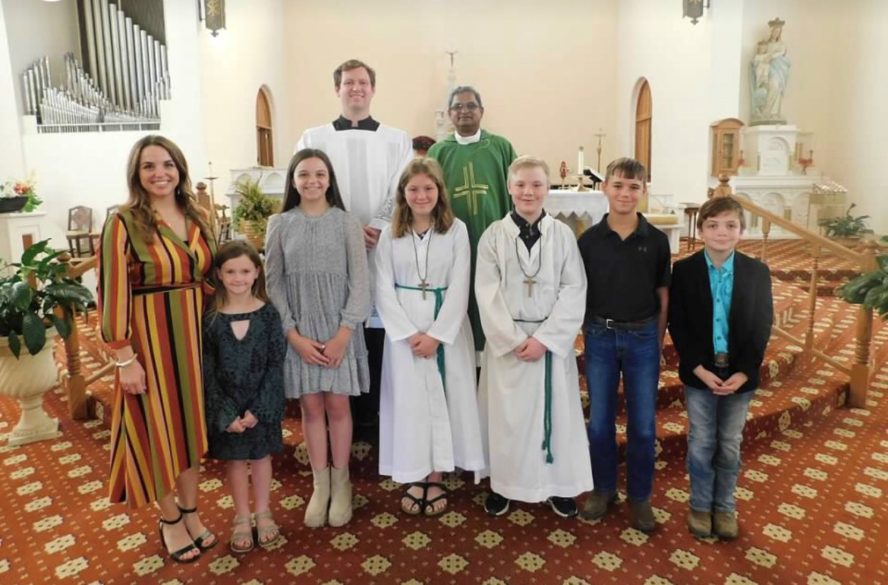
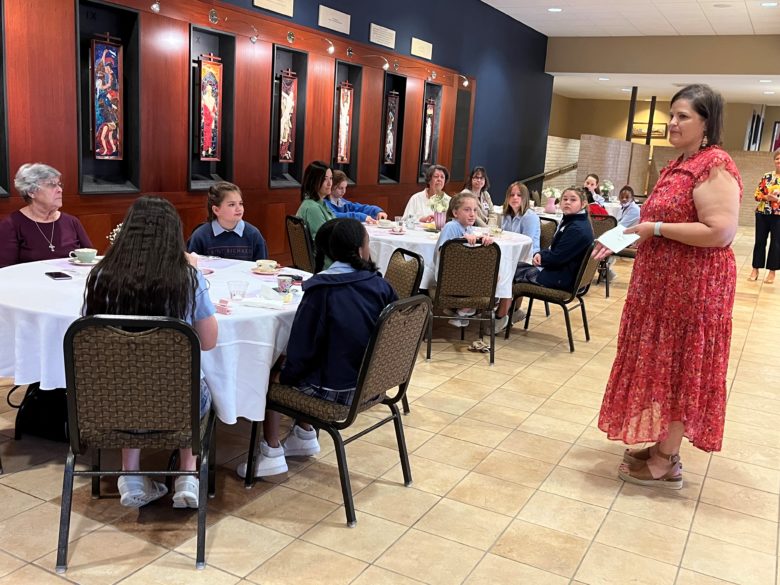
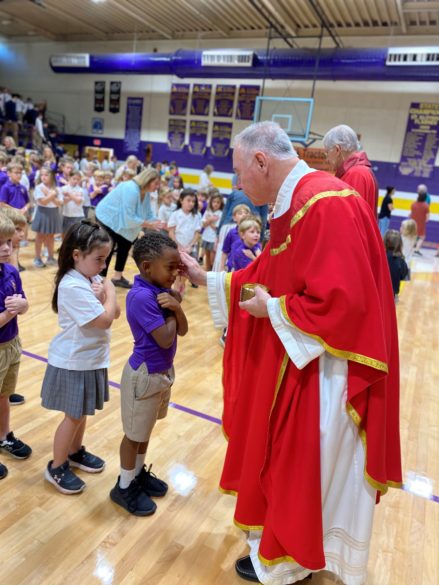
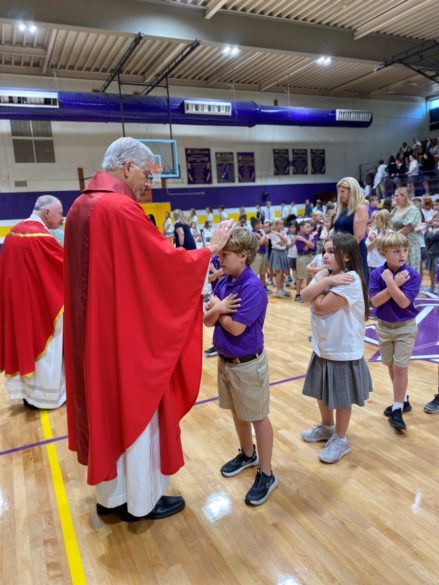
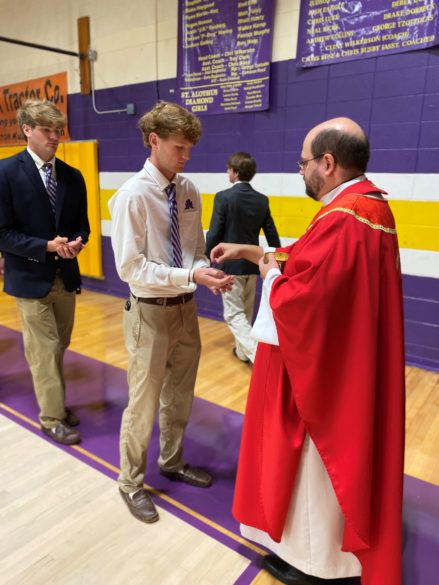

School Masses
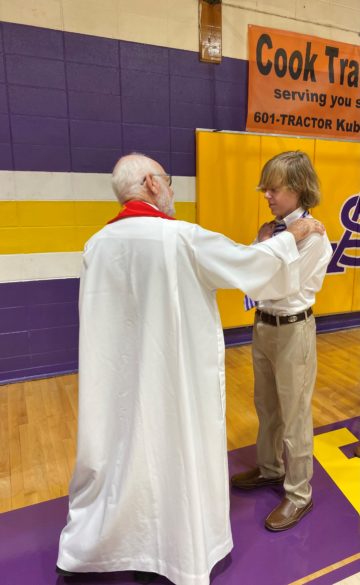
Columbus

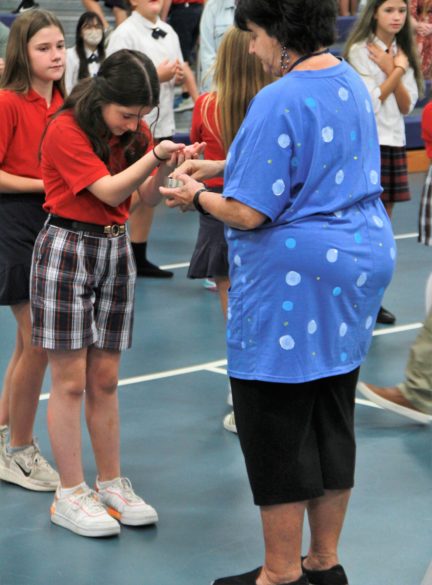
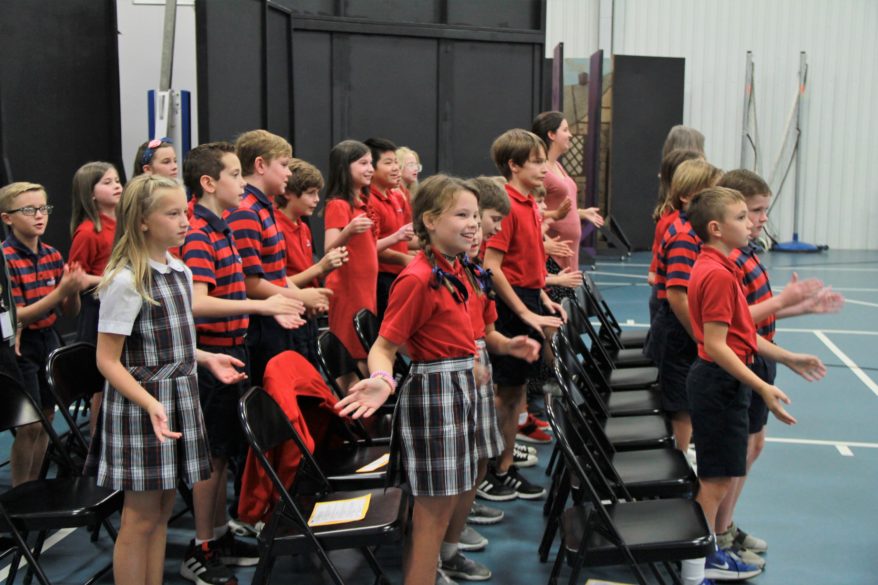
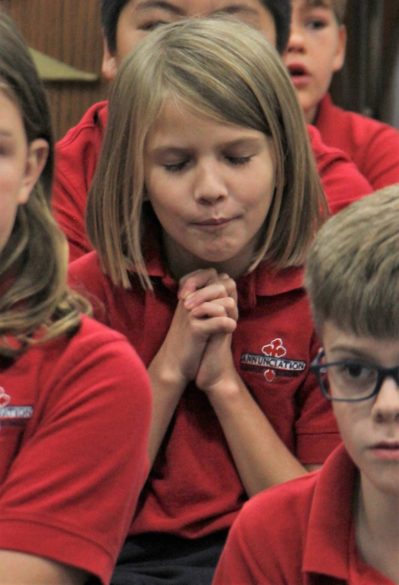
Happy birthday, Mary!
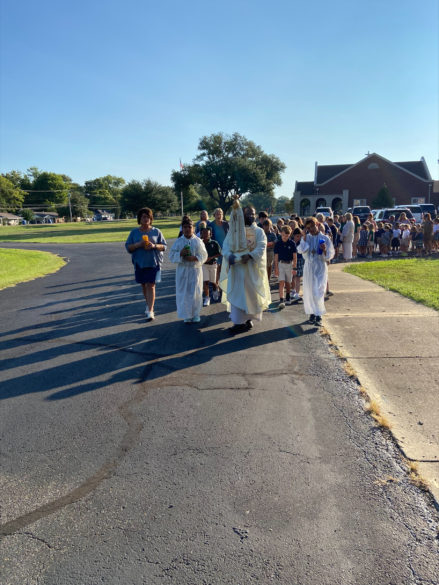
Hands-on learning



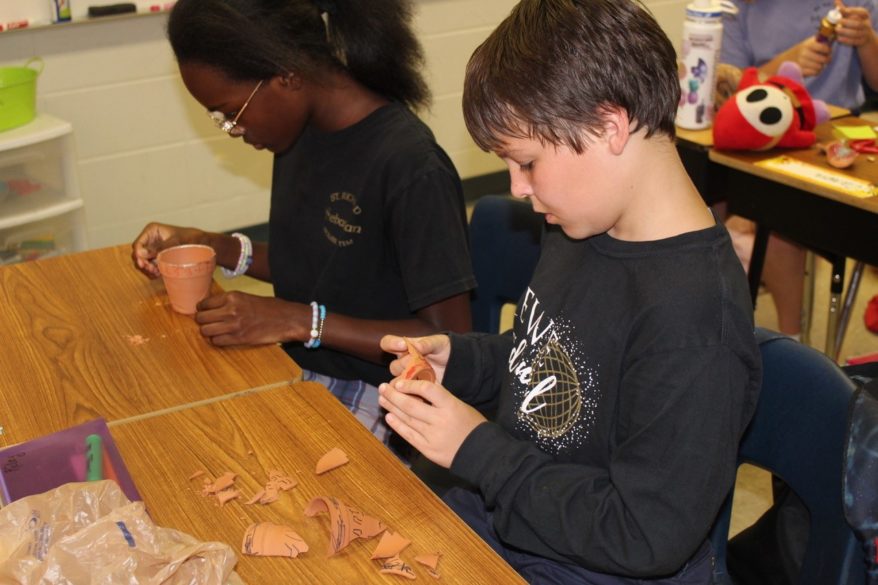







Columbus









By Joanna Puddister King
GLUCKSTADT – St. Joseph parish hosted their annual Germanfest on Sunday, Sept. 25 on the church grounds. The Gluckstadt community was founded in 1905 by German immigrants. Many of the descendants of the original families still attend the parish.
Much prep work goes into planning this fun-filled festival. Families gather weeks in advance to can sauerkraut using a traditional recipe. In the days leading up to the Germanfest you can find parishioners preparing sausages, bratwurst, desserts and other German delicacies to share with the community.
This year, Germanfest was a hot one with temps in the low-to-mid 90s, but festival goers had lots of fun, good food and a variety of beer to sample.
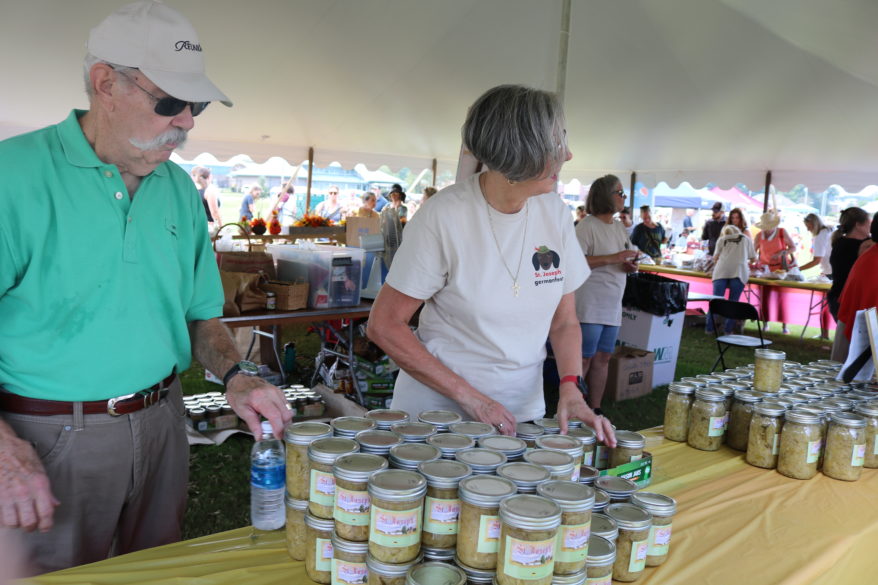
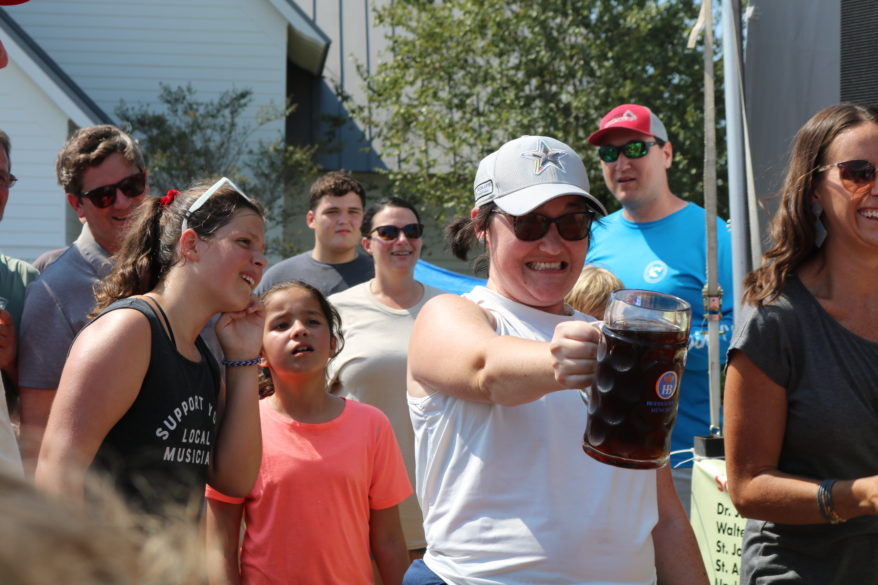
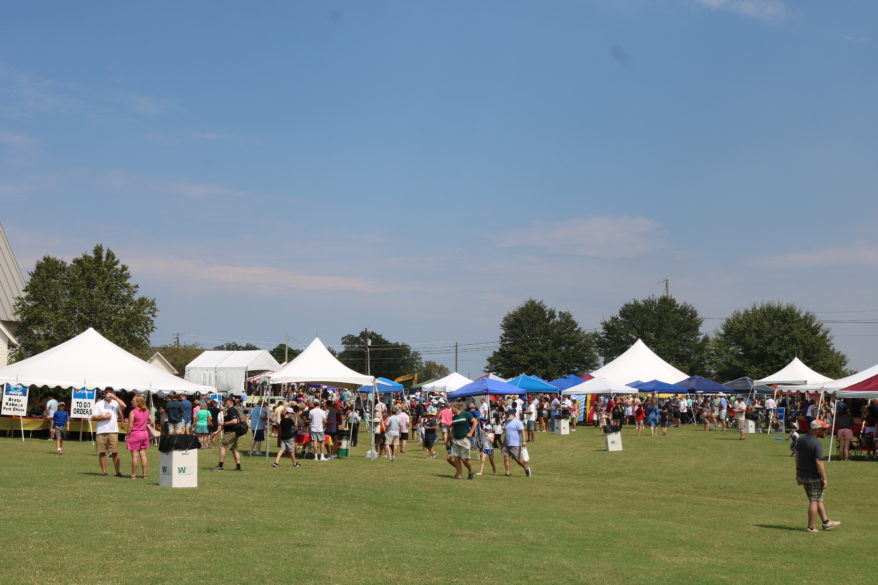

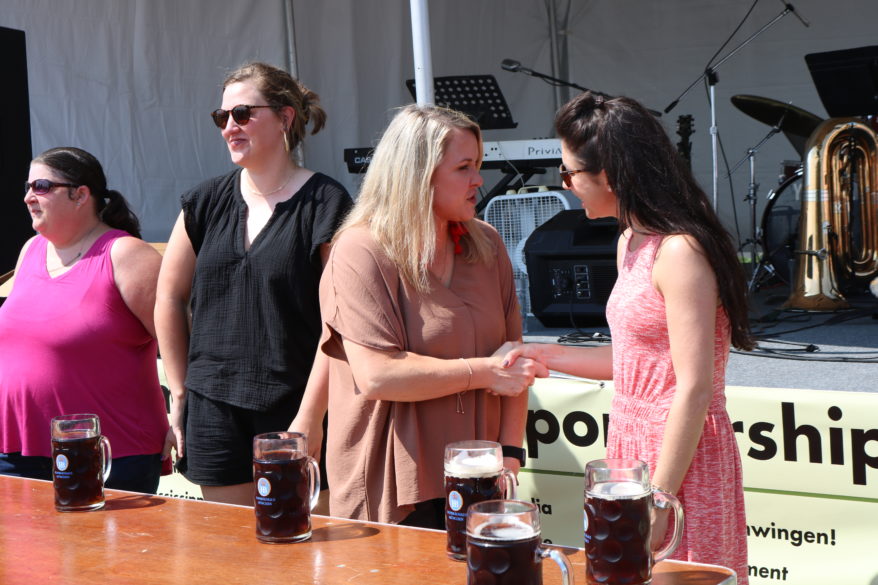
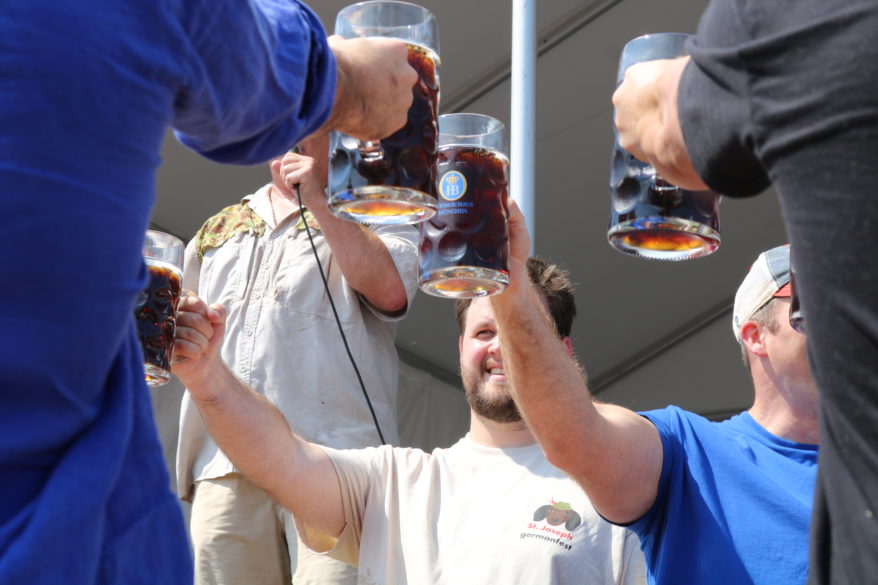
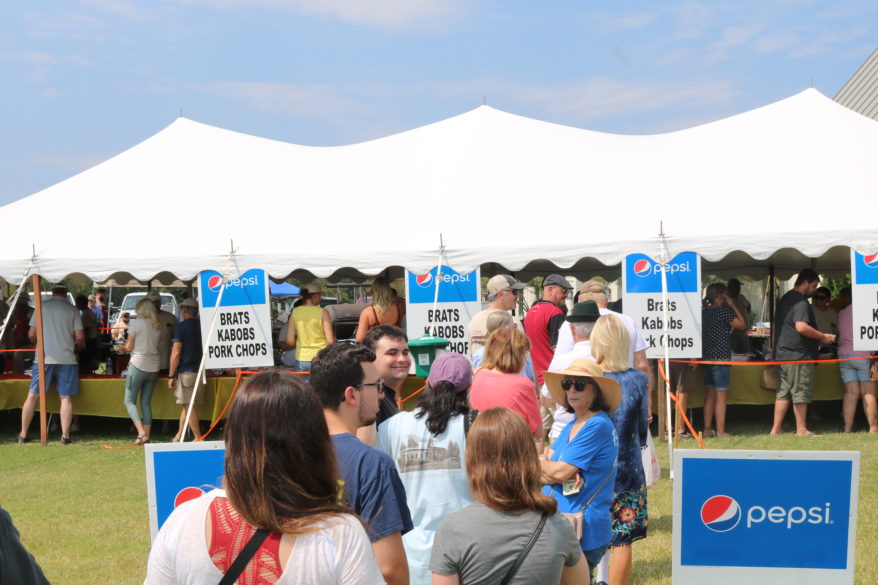
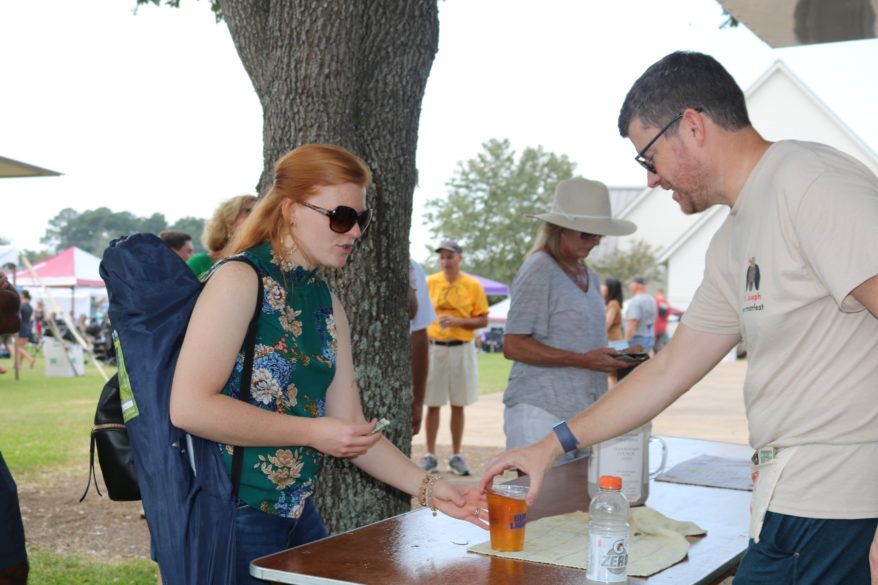
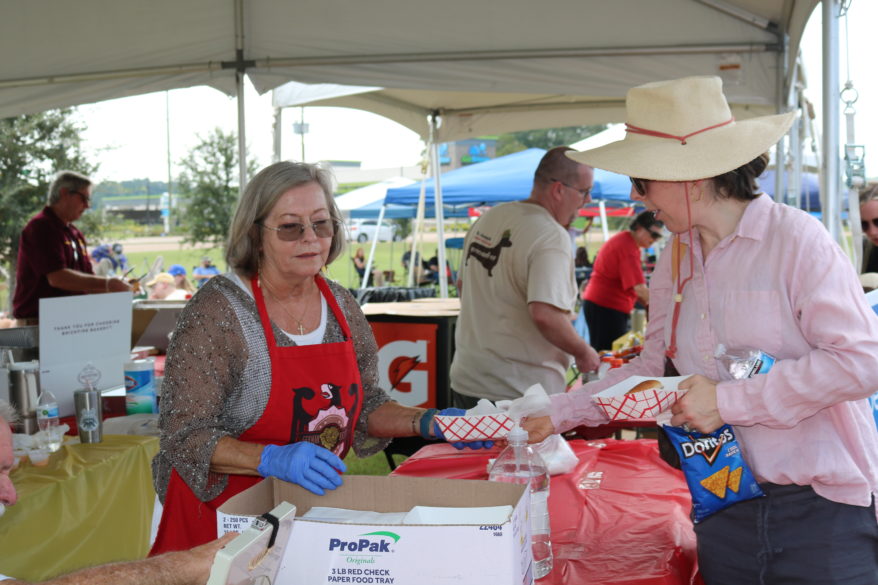
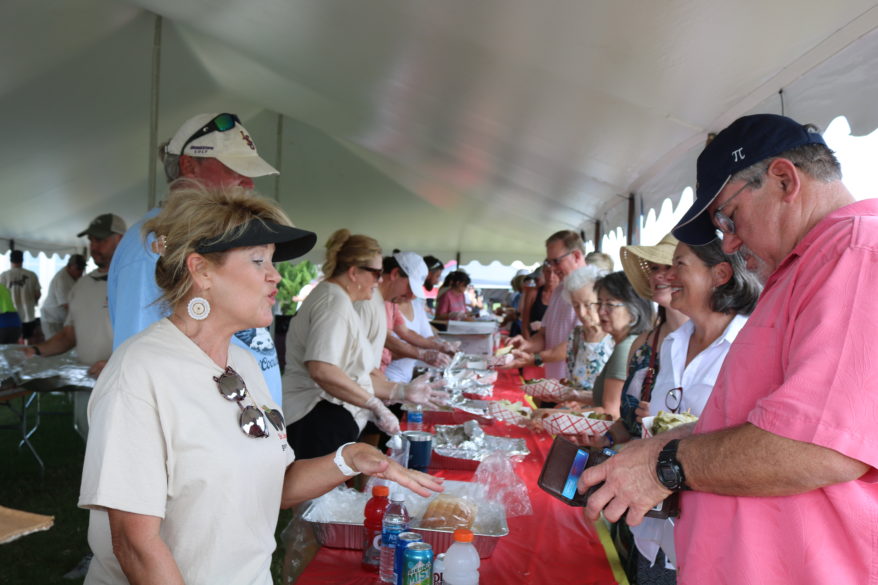

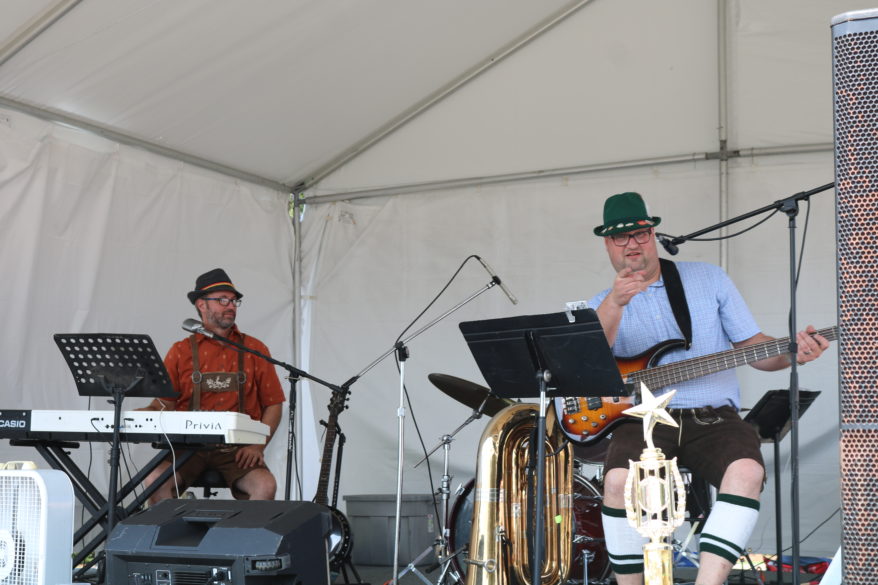
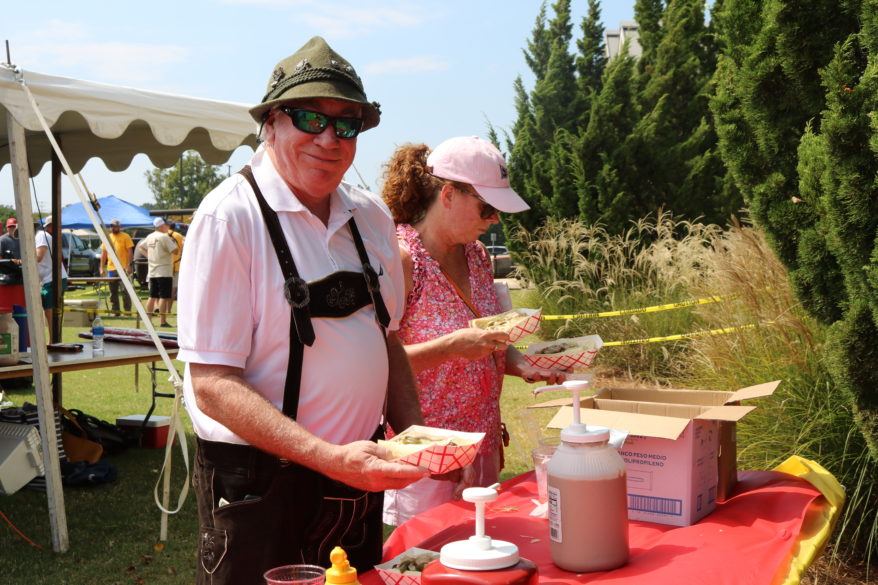
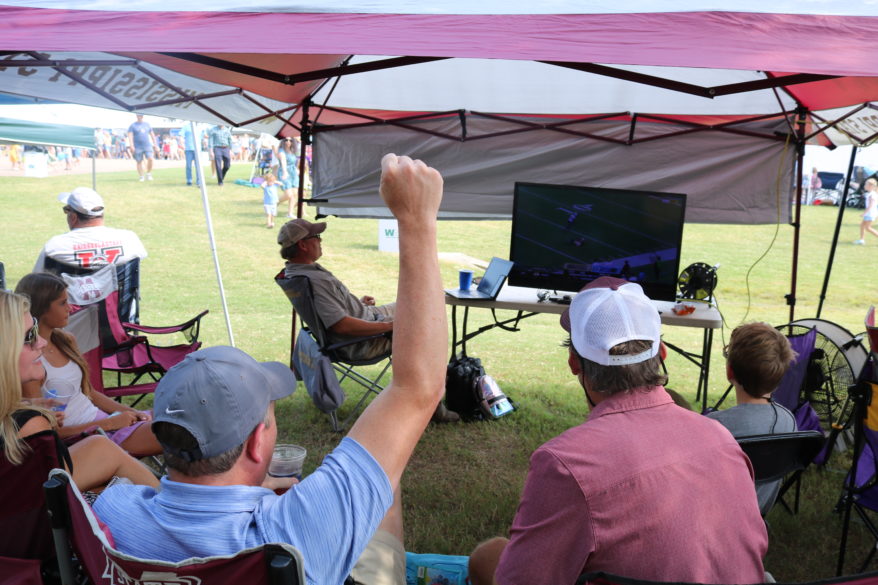

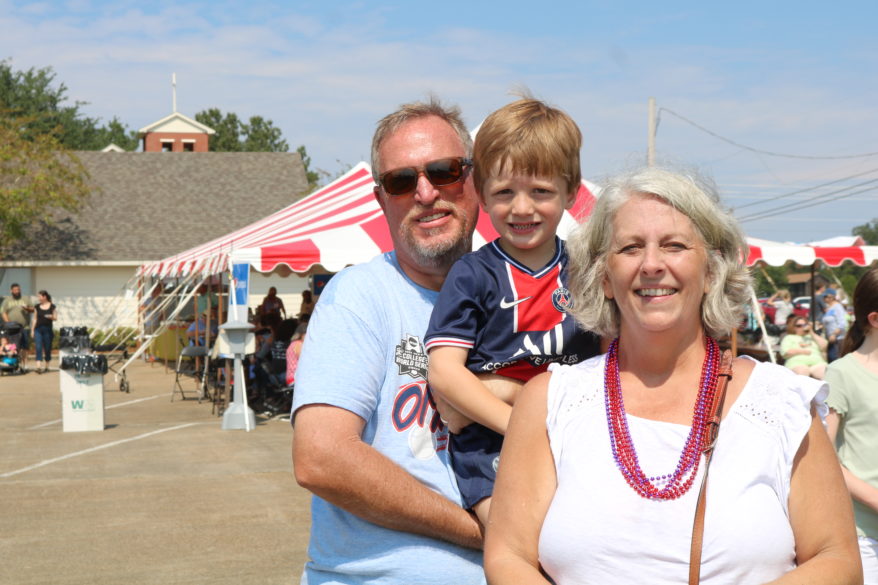
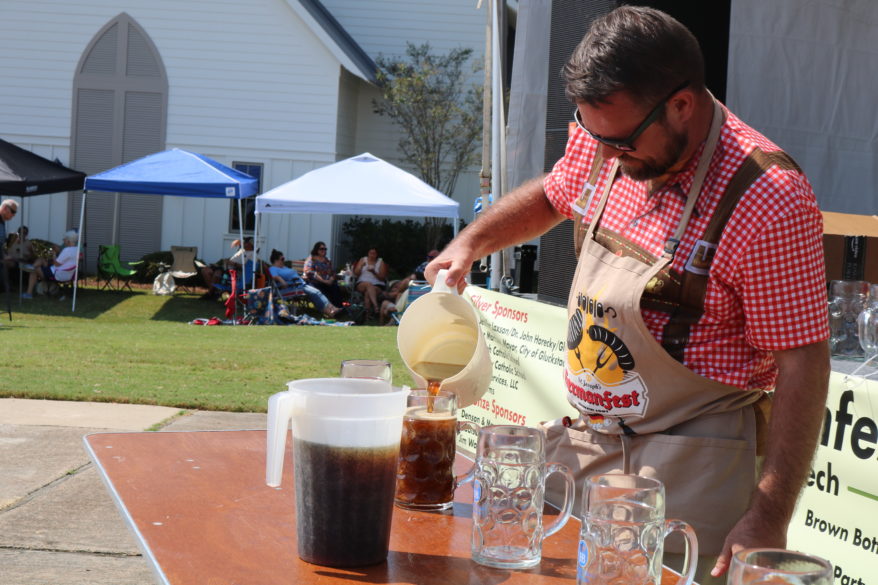

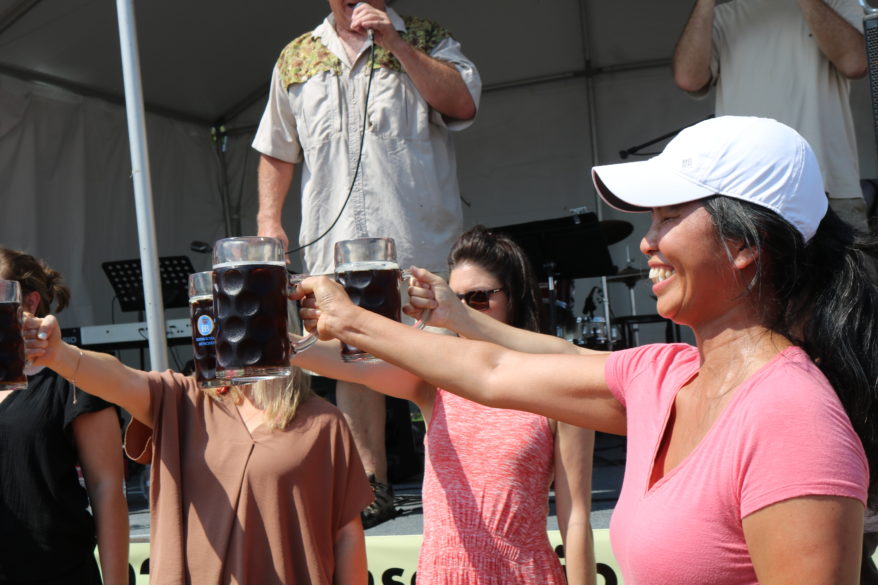
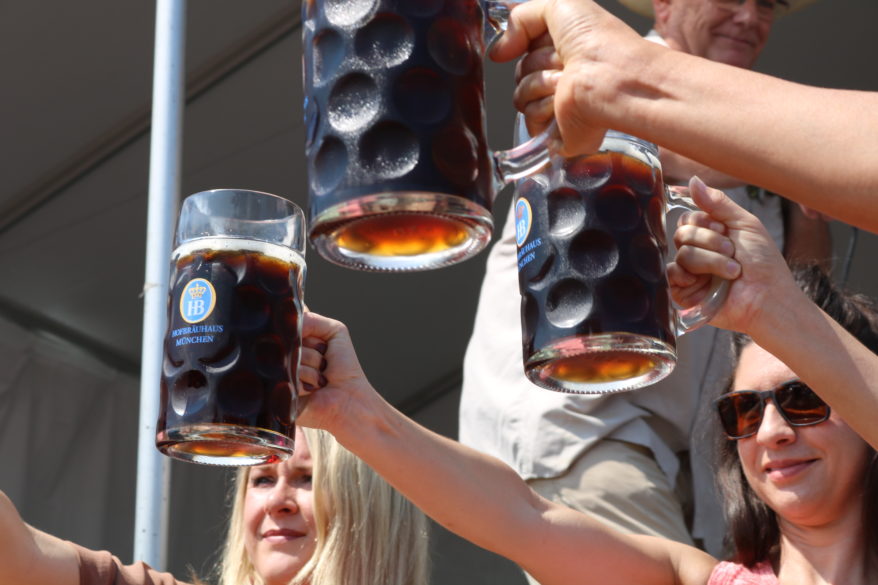
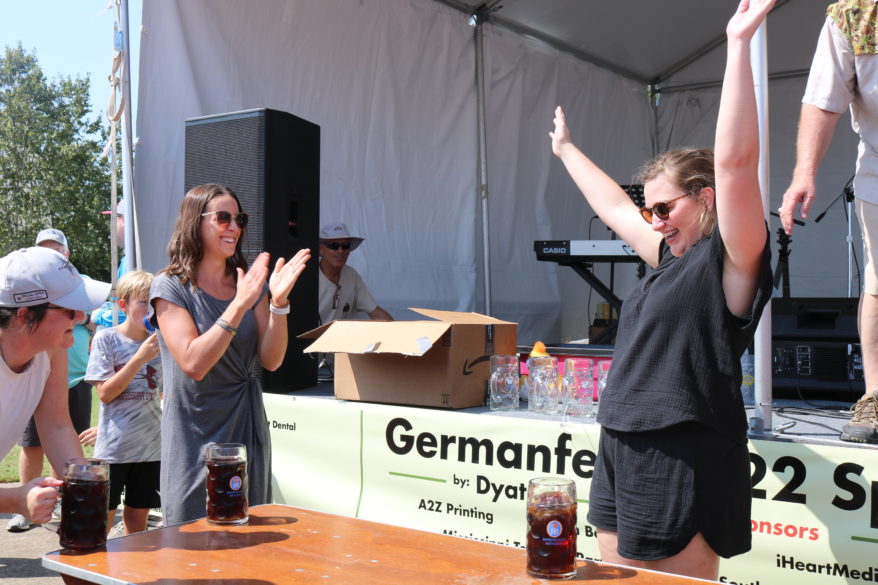
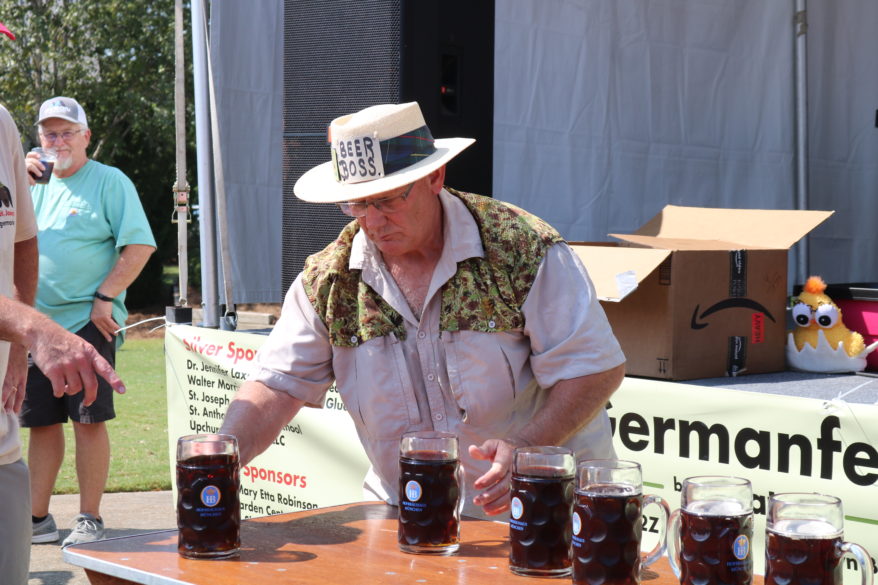
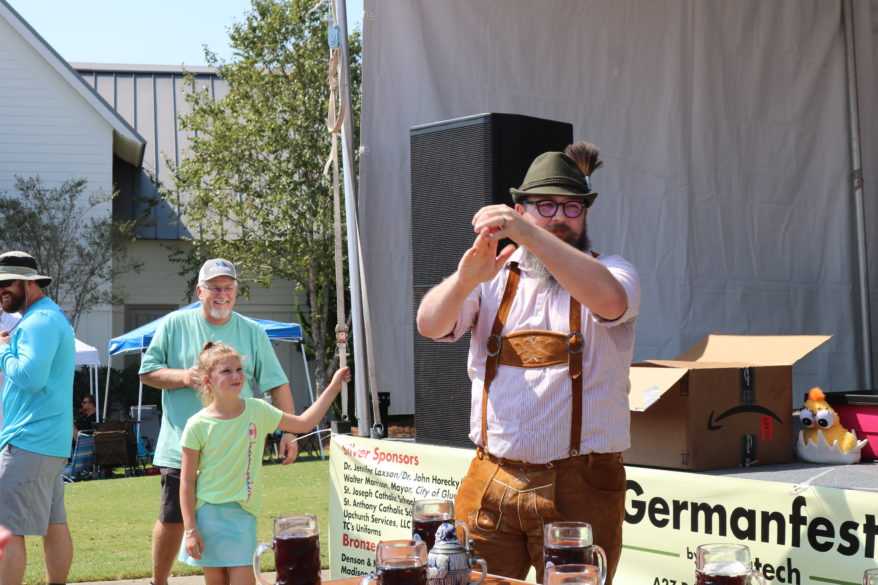
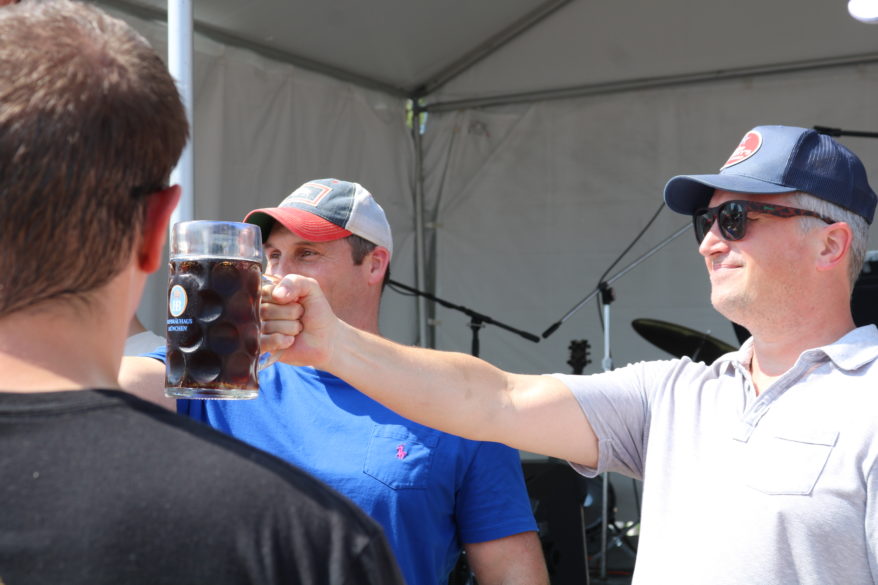
From the Archives
By Mary Woodward
JACKSON – In the last episode we had travelled with Bishop Gunn out West for a series of retreats. He had just arrived in Seattle on Aug. 14, 1918 and found himself with a week before his next engagement.
Seizing a few days off, he left Seattle and made his way across the border to British Columbia in Canada. Bishop Gunn had visited this part of the world before and he comments on its progress, although he makes a very “Gunnian” comment about war rations and the inhabitants of this British province.
“I left Seattle and went up the Puget Sound and spent a few days in Victoria and British Columbia. This was during the hottest part of the war when the Americas were eating stale bread, doing without sugar, sparing of everything and it was strange to find in the British Dominion that restrictions were unheard of. We were starving ourselves for the British and they were growing fat on our service and sacrifice.”
Wow. Bishop Gunn’s candor and wit are priceless moments of discovery. The journey continues below:
“I had been in Victoria and British Columbia years before, but the change and the betterment of both places was a distinct surprise. The trip on the Sound was ideal and when I got back to Seattle I was sorry to leave it.
“Seattle had grown from 20,000 to 600,000 between my two visits although there was not more than ten or fifteen years between the two. I had stopped in a little wooden frame hotel called the Washington. I looked for the same place in 1918 to find a hotel almost as big as the Waldorf-Astoria of New York.
“I enjoyed the week’s rest and left Sunday the 18th for Portland where I was booked to preach the retreat for the Archdiocese from the 19th to the 23rd. Archbishop Christie received me like a prince. I was comfortably installed in the Holy Cross College known as Columbia University and I found the priests attentive and respectful.
“There were about 85 in attendance. I gathered that the men would rather talk then mediate and it was like squeezing blood out of a turnip to me to give six original talks each day. However, I did it and they enjoyed it.
“At the close of the retreat, we had a big dinner at the Archbishop’s house and I was surprised to meet there Mgr. Kelley of [Catholic] Extension and Chas. Denechaud of New Orleans. After dinner we took a drive on probably the finest highway in America – the famous Oregon Highway which runs along the Dalles for fifty or sixty miles and affords scenery which cannot be duplicated anywhere.
“I left Portland for Helena arriving there on August 26th to begin a retreat which ended on the seventh anniversary of my consecration, August 29th.
“There were about eighty priests present and there was more formality in Helena than in St. Paul’s, St. Cloud or in Portland. The bishop, Bishop Carroll, assisted from the throne vested in all his glad rags.
“I tried some heavy stuff on the first day, but I found that the priests were human like everybody else and I switched to things practical and pastoral, with the result that we had really a very interested, I was told, and enthusiastic retreat.
“On Thursday a surprise, and frankly a very welcome one, came to me. The bishop was all apologies and told me that he was up against it – that some state law had come into effect on which all the priests had to take immediate action in view of getting St. Charles’ College accredited as a war college during the period of the war.
“The bishop said it was vital to the diocese that the priests should all hurry home and get busy pulling political strings on Friday and Saturday and make college announcements on the following Sunday. I yielded with internal joy and external resignation.
“The bishop asked me to give a closing lecture on education and as a talk like that needed no preparation on my part, I satisfied the bishop and primed the priests for their work, especially on the following Sunday. The result of their action was that St. Charles got the appointment.
“On Thursday night I left with the priests and many of them came as far as Butte and among them was an ex-Marist who was pastor of one of the Butte churches. I had taught this man in Washington in 1892. He was a little scatter brained and his assignment to Salt Lake College gave him wanderlust and he managed to get identified with the Diocese of Helena. He was a good fellow and I really enjoyed him.
“I got away from Butte on the night of August 29th and spent the two remaining days of August on the train. On September 1st I arrived in Chicago where I ran into a well-organized strike. This strike was among the cabmen, taxi drivers and streetcar men and I found myself at the railroad station and no means to get myself to a hotel.
“The strike was thorough and not a wheel could be turned in Chicago for money. I was in such a pickle that I threw timidity to the winds and asked a gentleman who was driving a private auto to take me to my hotel.
“I was in a city of churches on Sunday, September 1st and I could not find a Catholic Church in Chicago, with the result that I neither said Mass nor heard Mass – a nice example of a man who had been preaching retreats to priests for about a month.”
This concludes our world wind 1918 summer journey across the continent with Bishop Gunn. I hope it gives us a better understanding of and appreciation for our early church leaders in this country. Quite the time…
(Mary Woodward is Chancellor and Archivist for the Diocese of Jackson.)
By Laura Grisham
SOUTHAVEN – The story of Sacred Heart School dates back 75 years. In the beginning, Father John Flanagan, SCJ, wrote to Bishop R.O. Gerow in 1944 requesting a church for the 34 Catholics in the village of Walls in northwest DeSoto County. That was the year that the Harris family opened their home to the group to celebrate the first Mass. Many Sacred Heart School alumni fondly refer to this building as “The Little White House.”
By the end of 1944, construction of Sacred Heart Catholic Church was complete. During the dedication of the church, parishioners requested a school be built. World War II delayed construction of the school due to lack of building materials. Finally, in the fall of 1947, the work was completed. The School Sisters of St. Francis agreed to send three sisters to staff the school. On Sept. 17, 1947, Sacred Heart School opened with 17 students.
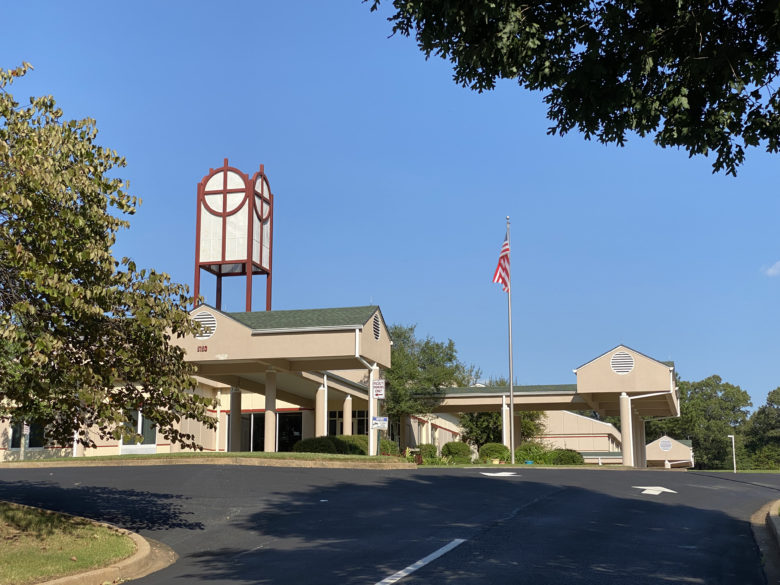
From that tiny three-room building in Walls, Mississippi, Sacred Heart School has seen many changes over the years. The growth of the student body necessitated the construction of a new building in 1999. A larger, more centrally located site in Southaven was chosen. Situated on 16 acres in central DeSoto County, Sacred Heart School serves students from across northern Mississippi and the Memphis-Metropolitan area. The school offers classes for hundred of students from early childhood development beginning at age three and continuing through middle school through eighth grade.
On Saturday, Sept. 17, exactly 75 years to the day after first opening its doors, Sacred Heart School celebrated its legacy of a quality catholic education with a full day of activities for students, staff, alumni and friends of the school.
The day started with a family picnic and games on campus. Inside, every corner of the school was filled with pictures, yearbooks and memorabilia from past years. Dozens of the school’s former educators were on hand to greet alumni and reminisce about days gone by.
Mass was celebrated in the school gymnasium with Bishop Joseph Kopacz, as the main celebrant. Alongside him were Father Vien Nguyen, provincial superior of the U.S. Province of the Priests of the Sacred Heart (SCJs), Father Jack Kurps, executive director of Sacred Heart Southern Missions (and vice provincial superior) and Father David Szatkowski, local superior of the SCJ community. More than 400 people attended the liturgy.
Accolades were in no short supply for the school or its educators. Father Kurps thanked the many dedicated teachers and staff, who through the years, were committed to making sure that the children received a good education and made sure that they could succeed.
He also recognized the dedication of the School Sisters of St. Francis, who have provided many teachers throughout the schools’ seven-and-a-half decades of operation. “In the early years, most of the students of Sacred Heart School came from poor backgrounds. The Sisters opened the back door of their convent and gave families food, clothing and an encouraging word. They were able to help families know that God loved them and that the Sacred Heart of Jesus would always be with them and protect them.”
Father Kurps also shared a letter from the Superior General of the Priests of the Sacred Heart, Father Carolos Luis Suárez Codorniú, who had visited the school in late spring. Father Carlos said in part that he was impressed with the great spirit and care those at the school share with one another; it is a school where people are ready to do things with love and generosity in the service of all.
Father Vien shared that when the Priests and Brothers of the Sacred Heart founded the school so many years ago, they strived to carry out the vision and passion of their founder, Father Leo John Dehon, who believed in the formation in young people in making a difference in society and in the church through education.
In a nod to Sacred Heart Southern Missions’ 80 years of service to the area, Bishop Kopacz said that the work of educating children and raising them out of poverty was a blessing, adding, “We have been blessed to collaborate with so many dedicated disciples of the Lord here in their schools and parishes.”
Leaders from area municipalities were also a part of the celebration and recognized the contributions of the school and its people in a special way. The mayor of Southaven, Darren Musselwhite, declared Sept. 17 as ‘Sacred Heart School Day’ and honored the school with a special proclamation. In addition, Sister Virginia Reinl and Sister Margaret Sue Broker, OSFs, were recognized with proclamations from Keidron Henderson, mayor of Walls, Mississippi (the original location of Sacred Heart) for their contributions to the school and the people of the community.
The newly completed Sister Margaret Sue Broker Walking Trail was dedicated by Bishop Kopacz following Mass, complete with a ribbon-cutting ceremony and celebratory lap by many in attendance. Named for the sixty-two year veteran of the school and a champion for its creation and construction, the walking trail is a fitting tribute for a woman who has taught and inspired generations of students.
A delicious barbeque dinner followed the dedication, carefully crafted by another Sacred Heart alumnus and restaurant owner, John David Wheeler. After sunset, everyone was treated to a spectacular fireworks show, a DJ, and live music performed by the Christian Brothers High School Jazz Band and several Sacred Heart School alumni bands.
“Without a doubt, Sacred Heart School began the education of my mind, my heart and my soul. I am forever grateful for this threefold foundation that was provided to me, and I am thankful that I see this foundation still being provided to my children,” said David Delgado, municipal court judge, local attorney and Sacred Heart Alumnus.
Ed Savage, an alumni and former employee of Sacred Heart Southern Missions, shared his thoughts on the celebration and the school. “As a former student I have long understood and appreciated the tremendous blessing Sacred Heart School was for me personally… In four short years the arch of my life was transformed by Sacred Heart School,” Savage said.
“The 75th celebration of the school brought into even clearer focus the tremendous impact Sacred Heart School has had on generations upon generations of people from all walks of life here in North Mississippi,” he continued. “Catholic and non-Catholic, rich and poor, Black and White, Hispanic and Asian have all been blessed. The celebration reminded me to thank God for all those past and present whose work and generosity has made this marvelous school possible, and for the long line of teachers who have shared a dedication to bring out the very best in every child that comes through the doors of Sacred Heart School.”
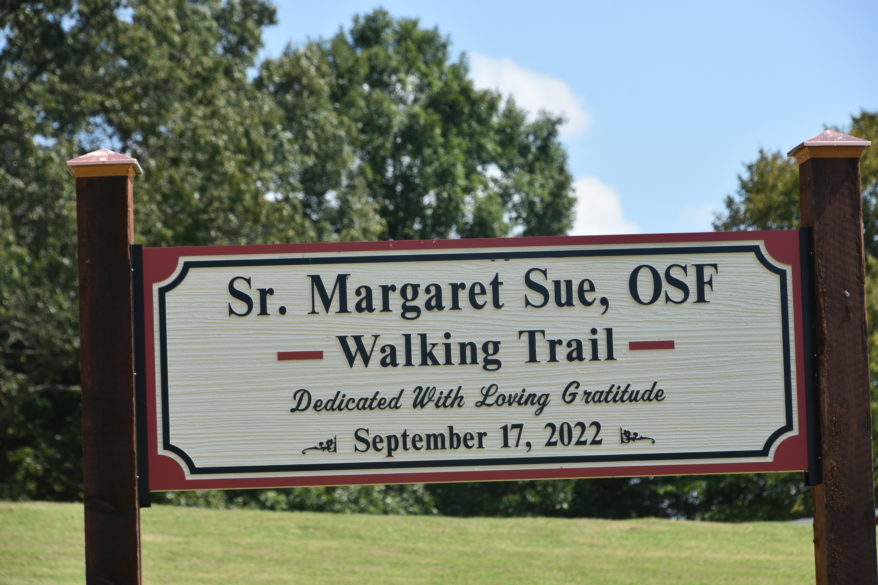
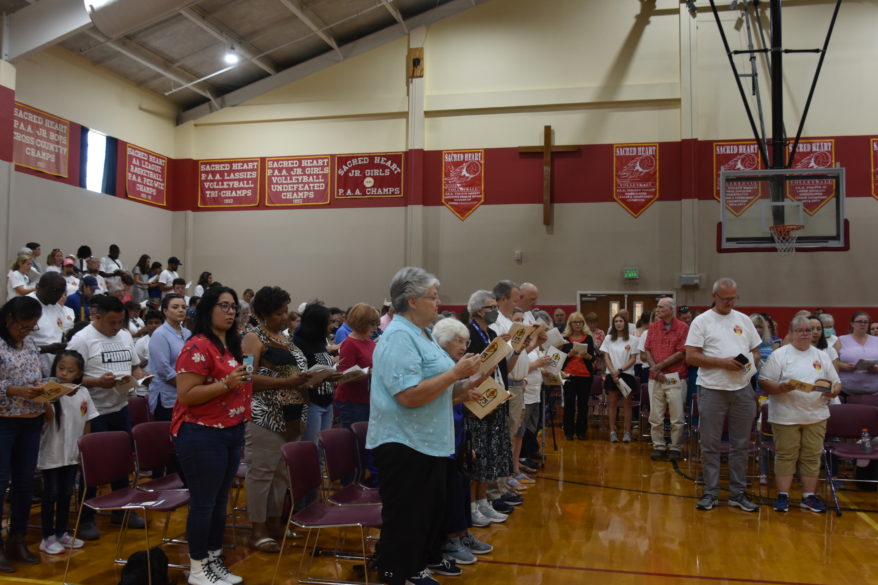
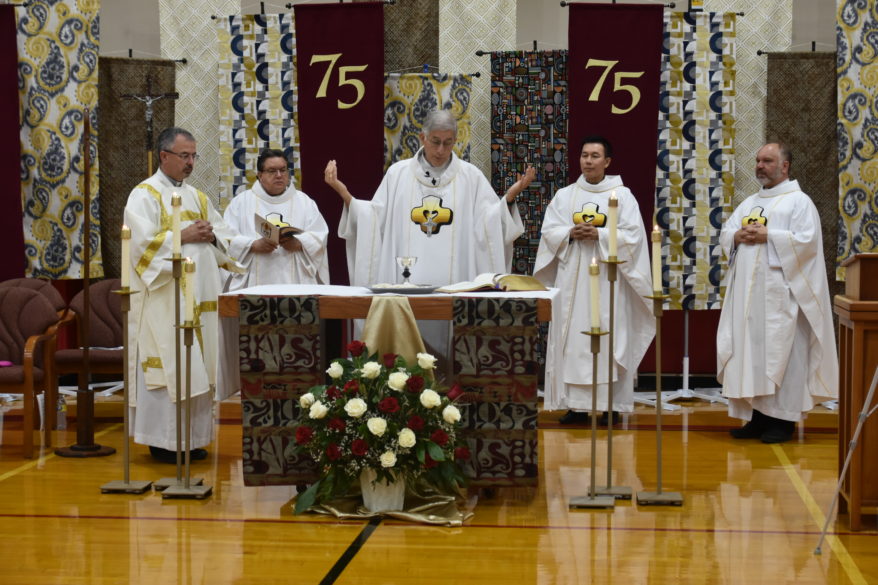
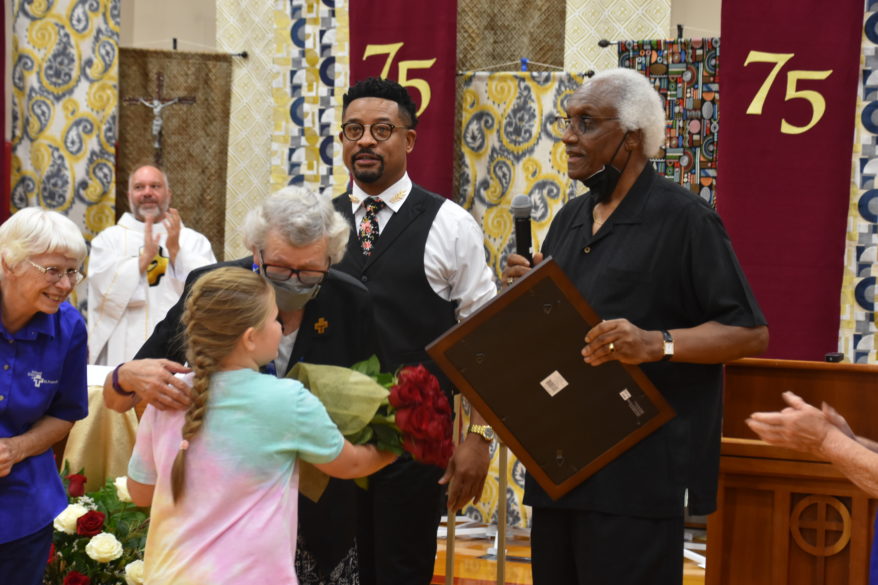
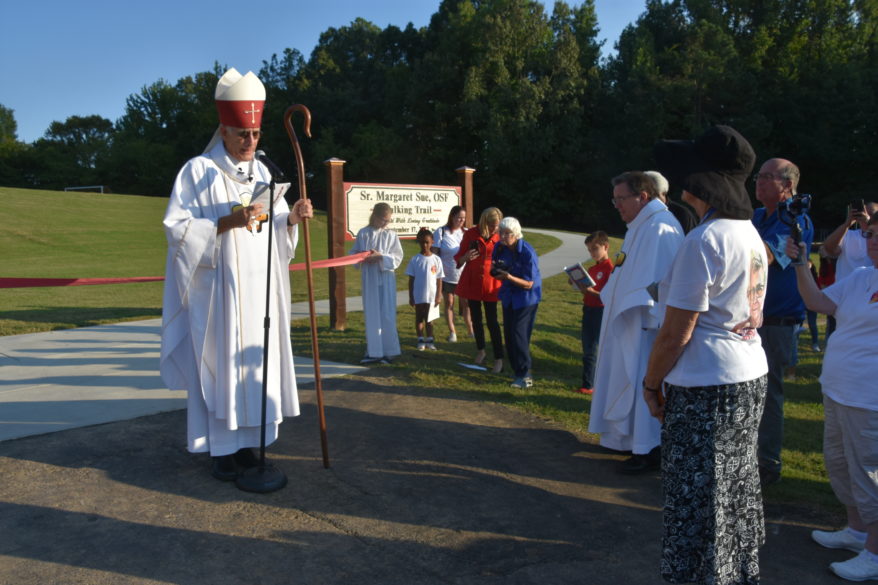

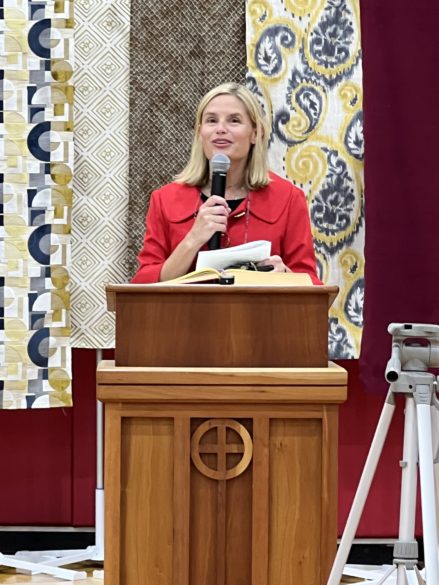
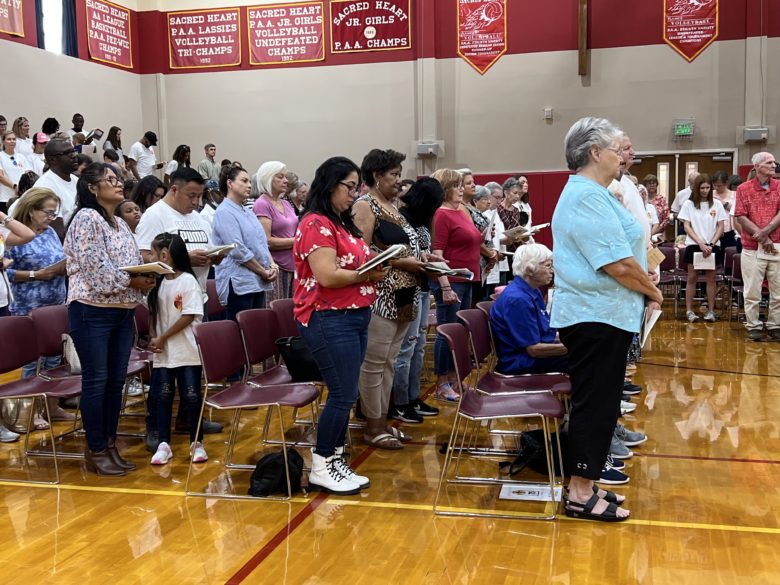

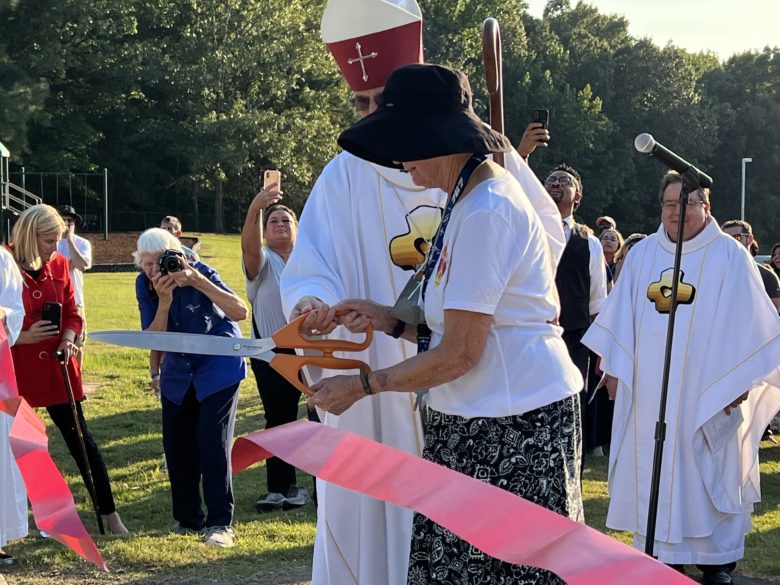
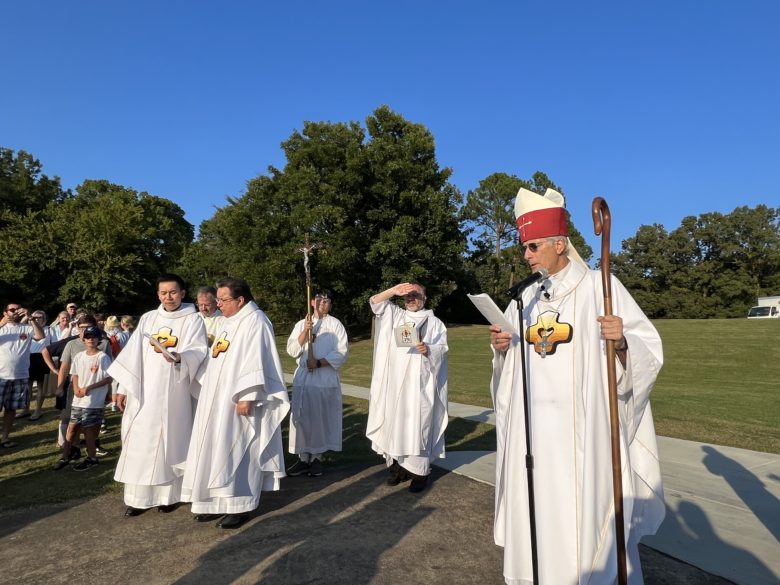
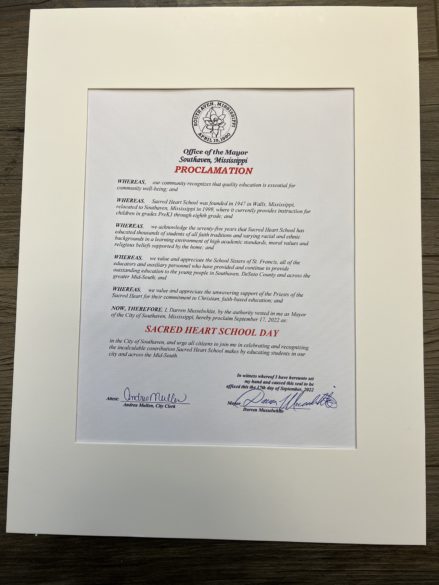
By John Surratt (The Vicksburg Post)
VICKSBURG – For 116 years, St. Mary Catholic Church has been a source of spiritual guidance and education for African American Catholics in Vicksburg and Warren County.
Its importance to the community will be remembered on Oct. 16 with a ceremony dedicating two historic markers – one for the church and another for the elementary and high school.
The markers, said Benny Terrell, a member of the marker committee, were the idea of the church’s pastor, Father Joseph Nguyen.
“He decided that he wanted to do something to recognize St. Mary’s; to highlight the significant contributions of St. Mary’s Catholic Church and St. Mary’s School to the spiritual and educational needs of the Vicksburg community,” he said. “We wanted to cover those things that we have done that have impacted this community and a lot of the minority people in this community.”
The original plan, Terrell said, was to unveil the markers in 2021 to celebrate the church’s 115th anniversary, but the impact of COVID-19 delayed the plans.
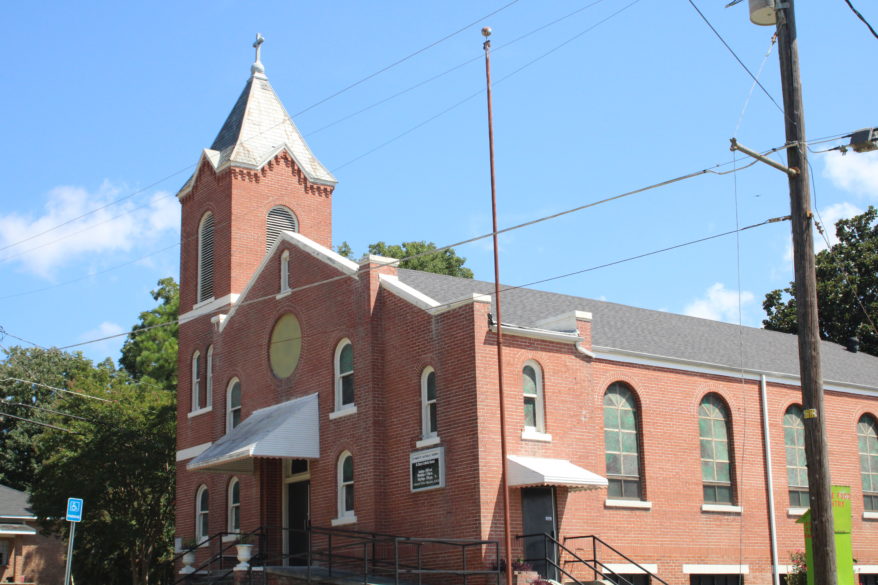
“We couldn’t get the markers done until 2022 but we decided to go on and do the dedication anyway.”
St. Mary’s parish was founded in 1906 by Father Aloysius Heick. The first church was on Holly Street “right behind where United Cleaners is located on Cherry Street, down the hill,” Terrell said.
The Sisters of Mercy provided the altar for the first church, the candlesticks and the priest’s vestments, and the priests at St. Paul Catholic Church provided a place for Heick to stay until St. Mary’s moved to its present location at Main and Second North streets later in 1906 and also started an elementary and high school. The present church was built in 1923.
The congregation at St. Paul’s collected $279.80 that they donated to Heick to buy the land and philanthropist Katherine Drexel, who was later canonized a saint, provided half of the money necessary to get the property.
“When they moved from Holly Street, there were three houses on the lot,” committee member Josephine Williams Calloway said. “They utilized one for the priest, one for the school and one for the nuns when they came.”
School attendance at the time was so low, she said, the grade school and high school were housed in the same building.
“They (parish officials) had to contact most of the parishioners to see how many would come to the school,” she said.
A two-story Greek revival building was built in 1908 and was later used for the high school. Drexel, Calloway said, contributed money for the building.
“She came here to inspect it and according to accounts, she was very impressed with what they were doing,” she said.
“She was very dedicated to supporting Black Catholics in this country,” Terrell said. Not only did she provide funding to help secure our property, but when Father Heick went to Jackson, she helped secure the property over there by donating funds. “She also paid for Xavier University in New Orleans. She was very generous and very supportive of Black Catholics and Native Americans.”
The nuns who taught the children at St. Mary’s were members of the Sisters of the Holy Spirit, “Which were all German,” committee member Cherrie Boykin McClelland said.
“And in order to teach in Mississippi, the teachers, if they had not completed their teacher training in Germany or Holland, they had to go to DePaul University in Chicago and get an additional degree before they were allowed to teach here,” Calloway said. “So, most of our teachers had two degrees and one of our teachers was a professor at Peking University (before Catholics were expelled from China).”
“They spoke limited English and they practiced English on the way from Europe to the United States,” Terrell said.
Because they were teaching African American children in the then-segregated Jim Crow South, “The nuns were not that welcome in Vicksburg and the congregation was the one that really supported them,” Terrell said.
“The nuns would not go anywhere by themselves; they would always go in pairs. People still did not cater to the idea of white nuns teaching Black kids,” he said.
“Sometimes they were referred to as the ‘N Nuns,’” McClelland said.
But the members of St. Paul took a different attitude.
“The contribution of the white community should be noted because the congregation consisted of Italian, Irish, German and Lebanese and they supported the nuns,” Calloway said. “Mother Hildegard, a Sister of Mercy nun, and her family supported the missionary sisters when they needed food and help.
“A number of prominent whites attended St. Mary’s on a regular basis and still do,” she said. “Although this is an African American parish, it has truly served the community of Vicksburg and welcomed everyone who came. Although we may be assigned to the back pews of St. Paul, they were integrated into the total Catholic community at St. Mary’s. They helped us and we helped them.”
The elementary school closed in 1970 and the high school closed in 1964. When the schools closed, Terrell said, the children who wanted to continue attending Catholic school had to go to Yazoo City. Calloway’s father, a prominent businessman in Vicksburg, took the children to Yazoo City and waited there to take them home.
When a new high school building was built in 1948, McClelland’s father, a contractor, contributed most of the money and materials.
“I think he actually built the high school, along with other adults,” Terrell said.
“Our parents worked hard to support St. Mary’s,” Calloway said. “We are continuing their effort. What we have done here has influenced the whole community.”
(Reprinted with permission of The Vicksburg Post.)
By Bishop Joseph R. Kopacz, D.D.
As Christians, we do have the inside track on the road to eternal life. The Lord Jesus’ resurrection from the dead, and his appearances to the disciples, although not a matter of historical evidence and scientific proof, are breath taking in the scriptures. The wounds, the baked fish and bread, the burning Word, the breaking of the bread, the personal encounters, the forgiveness, the peace, the joy, the gift of the Holy Spirit and the birth of the church.
It may not be the work of the laboratory, but it is the labor of love through faith in the risen One in a bond that can never be broken, and in an eternal promise that is sealed in the Blood of the Lamb. With St. Paul we press on to the finish line (Phil 3:14) because our citizenship is in heaven. (Phil 3:20) For our eyes are fixed not on what is seen but rather on that which cannot be seen. What is visible is transitory; what is invisible is eternal. (2 Cor 5:18)
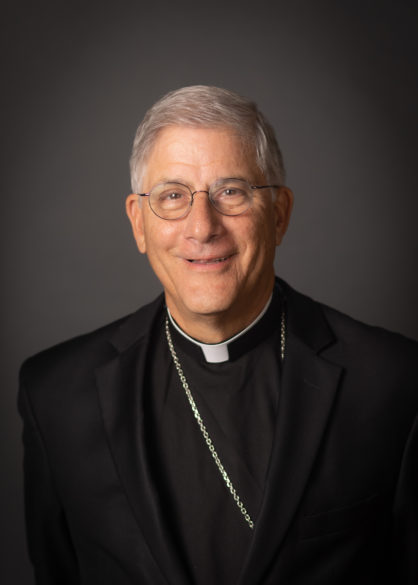
However, our belief in the resurrection of the body and life everlasting does not place us on the sidelines of this life. Rather, the Holy Spirit who raised Jesus from the dead places us squarely in the thick of this world’s joys and sorrows, tragedies and triumphs, as we await the blessed coming of our Lord Jesus Christ. Indeed, all creation groans and is in labor pains until now…(Romans 8:22), and the Christian groans and grieves with the rest of humanity, but with hope because Jesus is risen. As Jesus said to the woman at the well, the life of God within us is like a spring of water within welling up to eternal life. (John 4:14)
Eternal life has begun and this is the source of our hope in our commitment to respect life across all stages of the human lifespan. With all of the attention of the baseball world on Aaron Judge, a New York Yankee, as he surpasses 60 home runs, the memory surfaced for me of another superstar who packed Yankee stadium back in 1979.
St. John Paul II did not disappoint. Only two years into his apostolic ministry he launched moon shots during his presiding at Mass and preaching that carried far beyond the stadium’s confines into the hearts and minds of Catholics and people of good will around our nation and our world. From the perspective of history, we know that he was a warrior on behalf of life, unborn and throughout the lifespan, and one of his landmark encyclical letters that revealed the depth of his passion, was published around the time of his second apostolic visit to our nation in 1995. In it he warned about a culture of death that was plaguing America.
Back in 1979 with a full stadium as the launching pad, the Holy Father’s words arose from the proclamation of St. Luke’s parable of the rich man and Lazarus. St. John Paul framed his social teaching to follow in the power of evangelization.
“When we Christians make Jesus Christ the center of our feelings and thoughts, we do not turn away from people and their needs. On the contrary, we are caught up in the eternal movement of God’s love that comes to meet us; we are caught up in the movement of the Son, who came among us, who became one of us; we are caught up in the movement of the Holy Spirit, who visits the poor, calms fevered hearts, binds up wounded hearts, warms cold hearts and gives us the fullness of his gifts.”
From this fountain of God’s eternal movement, John Paul II continued: “Catholics of the United States are to walk hand in hand with your fellow citizens of every creed and confession. Unity among you in all such endeavors is essential, under the leadership of your Bishops, for deepening, proclaiming and effectively promoting the truth about human life, the dignity and inalienable rights, the truth such as the church receives it in Revelation and such as she ceaselessly develops it in her social teaching in the light of the Gospel…The parable of the rich man and Lazarus must always be present in our memory; it must form our conscience. Christ demands openness to our brothers and sisters in need — openness from the rich, the affluent, the economically advanced; openness to the poor, the underdeveloped and the disadvantaged.
“All of humanity must think of the parable of the rich man and the beggar. We cannot stand idly by. Nor can we remain indifferent when the rights of the human spirit are trampled upon, when violence is done to the human conscience in matters of truth, religion and cultural creativity.
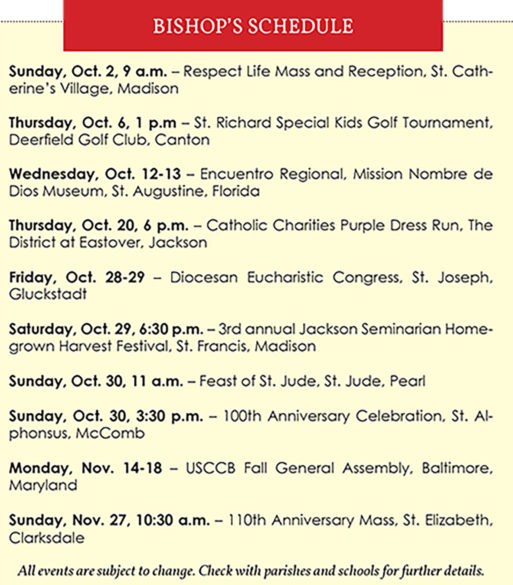
“We cannot stand idly by, enjoying our own riches and freedom, if, in any place, the Lazarus of the twentieth century stands at our doors. In the light of the parable of Christ, riches and freedom mean a special responsibility. And so, in the name of the solidarity that binds us all together in a common humanity, I again proclaim the dignity of every human person: the rich man and Lazarus are both human beings, both of them equally created in the image and likeness of God, both of them equally redeemed by Christ, at a great price, the price of “the precious blood of Christ.” (1 Pt 1:19)
I close with the following reflection which was a beacon for St. John Paul across his long and fruitful apostolic ministry. He was the missionary disciple without parallel.
“In the cultural wars of the recent past the church has defended the fundamental values of our civilization. We must be proud of those pastors and intellectuals who led those struggles. We must, however, ask ourselves. Is it possible to defend Christian and natural values in the public arena if their root — faith in the living presence of Jesus Christ — has dried up? If the root is rotten the tree will fall; we must first of all seek to strengthen the root. We must become missionary disciples: before preaching the law we must enter the hearts of the people. Only then will we be able to speak with authority, and only then will our people feel that the law is not an external imposition, but the answer to the most profound desire of their heart.” Rocco Buttiglione, Discovering Pope Francis The Splendor of Truth, The Gospel of Life, The Joy of the Gospel!
From one generation to the next you are our hope, O, Lord.
The church is universal, and nowhere has that been more apparent to me than at our Cathedral of St. Peter the Apostle. In my first three months as rector, I have been blessed and pastorally challenged by the diverse backgrounds and needs of our parishioners. After three Masses in English each weekend, our 1 p.m. Spanish Mass welcomes the largest single crowd of the bunch. The pews are truly full at that Mass, it’s pretty cool to see. We seek to serve this diverse community by offering catechesis in both English and Spanish, and I am consistently depending on our bilingual parishioners to help me with homily translations.
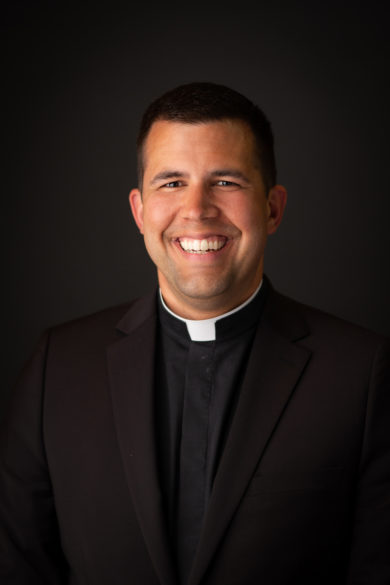
In order to serve this community well, facility with the Spanish language is vital. I have some Spanish skills, but not enough, and it is so difficult to find time as a pastor, or as an associate pastor for that matter, to go for an immersion experience in Mexico or Central America. With this in mind, we are going to send several of our seminarians to Cuernavaca, Mexico this coming summer for a two-month immersive experience. This experience is organized by St. Meinrad Seminary, and it is hosted by the Benedictine Monastery of Our Lady of the Angels outside Cuernavaca, which is about an hour and a half from Mexico City (if the traffic is good).
I visited the monastery to observe this program back in July and I was very impressed. Not only do the seminarians get one-on-one instruction from teachers four hours a day, but they also take part in the liturgical life of the monastery, and so the needs of their spiritual life are nurtured while this very practical program plays out. In the future all of our seminarians will be required to take part in this immersion as a part of their second summer in our program, but since the need is urgent and this program is helpful, we are going to send four of our guys (Ryan Stoer, Tristan Stovall, Will Foggo and Grayson Foley) down there this summer to get things kicked off, and I will be going to Mexico with them. I certainly could use the practice, and I hope that this will be a blessed time of camaraderie and fraternity as we take this adventure together.
My first thoughts about a required immersion experience began to take shape a few years ago when I visited the Diocese of Little Rock. Spanish immersion seemed to be a real point of cohesion for their seminarians, and it certainly is a great gift to the Hispanic Catholics in that diocese. Little Rock has consistently had over 20 seminarians, and their demographics are pretty close to ours, so I think they must be doing something right! I am pleased that we are getting this off the ground, and I pray that this will be a great opportunity for our seminarians to grow in love of the church, and the people they will serve, as future priests of the diocese.
NATCHEZ – St. Mary Basilica in Natchez comes alive in a new novel by parishioner G. Mark LaFrancis of Natchez.
A Song of Hope: A Spiritual Suspense Novel places the church in the center of a fast-paced, uplifting tale set in Natchez. “It is a coming-of-age story about a 14-year-old boy who discovers himself, Christianity and redemption,” said LaFrancis, author of ten books of fiction, poetry and non-fiction. “Although a mid-teen is the chief character, this novel isn’t solely a young person’s book. Adults have come to embrace it as well.”
LaFrancis and his family have strong bonds with St. Mary Basilica. He and his wife Eileen Maher are lectors and have volunteered in various ways with the church and the Knights of Columbus. Both of their now-adult children received their First Communions and Confirmations at St. Mary, as well as graduating from Cathedral School. Their son Mark was an altar server, and their daughter Mary sang in the youth choir.
“St. Mary Basilica parishioners welcomed us with open arms when we first arrived in Natchez in 1994. This book is a tribute to them while introducing the basilica to a group of readers who might not have experienced the church’s magnificence,” LaFrancis said.
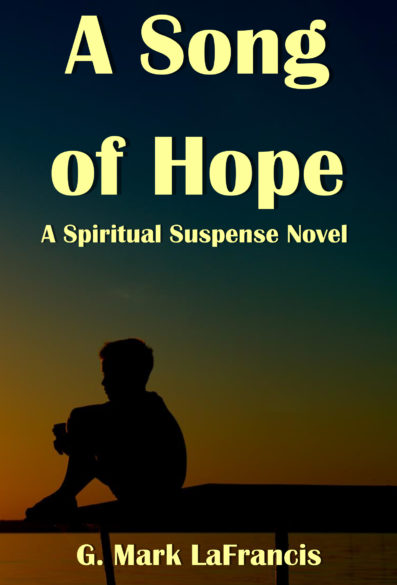
The book includes many references to the incredible statuary, stained glass and art work for which St. Mary is known.
Here is one passage: “Jesse rubbed his eyes. Before him was a most magnificent sight: an expanse some sixty feet wide and one-hundred-fifty feet long. The ceiling, some two hundred feet from the floor, was like the sky, a canopy of blue with gold trim, and painted stars. But this was no flat ceiling; it was a series of wide arches supported by eight great cream-colored columns. Intricately carved designs decorated the arches.”
Woven throughout the story are songs – “Amazing Grace” and “Here I Am, Lord” – that are important to Jesse because their lyrics inspire and intrigue him even though he has no religious training. Both hymns become like musical glue binding the tale.
A portion of the proceeds from book sales will benefit the Catholic Youth Organization in Natchez. The hard-cover book is available for $12.95 each, plus shipping, on LaFrancis’ web: gmarklafrancis.com or for $14.95 on Amazon.com.
By Carol Glatz
VATICAN CITY (CNS) – One cannot love and worship the Eucharist without compassion for the poor and marginalized, Pope Francis said at a Mass concluding Italy’s eucharistic congress.
“Let us recognize that the Eucharist is the prophecy of a new world, it is the presence of Jesus who asks us to dedicate ourselves to an effective conversion,” which includes the conversion from indifference to compassion, from waste to sharing, from selfishness to love and from individualism to fraternity, he said in his homily Sept. 25.
The pope concelebrated the Mass at an outdoor stadium in the southern Italian city of Matera, which was host to Italy’s 27th National Eucharistic Congress Sept. 22-25.
In his homily, the pope reflected on the day’s Gospel reading (Lk 16:19-31), in which Jesus tells the parable about the nameless rich man who “dined sumptuously each day” and ignored the poor man, Lazarus, “who would gladly have eaten his fill of the scraps.”
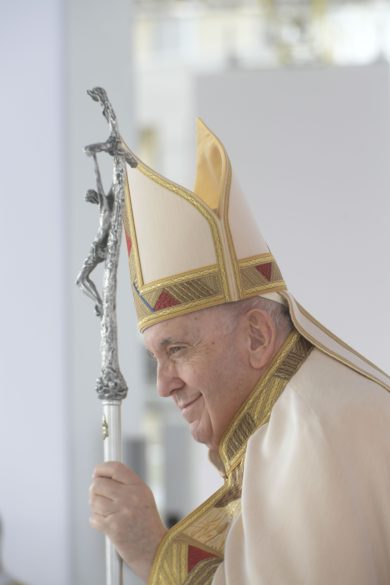
Pope Francis said, “It is painful to see that this parable” is still alive today with so many “injustices, inequalities, the unequal distribution of the earth’s resources, the abuse of the powerful against the weak, the indifference to the cry of the poor, the abyss we dig every day creating marginalization.”
All of this, he said, “cannot leave us indifferent.”
The parable talks about the abyss or great chasm that the rich man dug between him and Lazarus when they were alive, so now, “in eternal life, that gulf remains,” the pope said.
One’s eternal destination is determined by one’s earthly life, he said. “If we dig a chasm now,” separating oneself from others, then “we dig our own grave for later; if we raise walls against our brothers and sisters now, we remain imprisoned in loneliness and death later.”
The Eucharist offers a “permanent challenge” to adore and worship God, not oneself, the pope said, and “to put him at the heart” of everything.
“Only the Lord is God, and everything else is a gift of his love,” he said.
“If we worship ourselves, we die, asphyxiated inside our tiny ego; if we worship the riches of this world, they take possession of us and enslave us; if we worship the god of appearance and are inebriated in wastefulness, sooner or later life is going to ask us (to pay) the bill,” Pope Francis said.
“Instead,” he said, “when we adore the Lord Jesus present in the Eucharist, we receive a new way of looking at our lives as well: I am not the things I possess and the successes I am able to achieve; the value of my life does not depend on how much I can show off nor does it diminish when I go through failures and setbacks.”
“Every one of us is a child who is loved” and blessed by God, “who wanted to clothe me with beauty and wants me free from all enslavement,” he said. Those who worship God are free and are slaves to no one, he added.
The pope asked people to rediscover the prayer of adoration and to pray for a church that is “eucharistic, made up of women and men who break themselves like bread for all those who gnaw on loneliness and poverty, for those who are hungry for tenderness and compassion, for those whose lives are crumbling because the good leaven of hope has been lacking.”
The ideal, he said, is “a church that kneels before the Eucharist and worships with awe the Lord present in the bread, but which also knows how to bend down with compassion and tenderness before the wounds of those who suffer” and to become the “bread of hope and joy for all.”
IN EXILE
By Father Ron Rolheiser, OMI
“The cock will crow at the breaking of your own ego – there are lots of ways to wake up!”
John Shea gave me those words and I understood them a little better recently as I stood in line at an airport: I had checked in for a flight, approached security, saw a huge lineup, and accepted the fact that it would take at least 40 minutes to get through it.
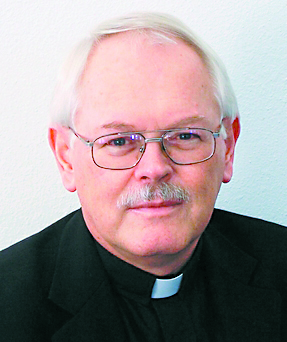
I was all right with the long wait and moved patiently in the line – until, just as my turn came, another security crew arrived, opened a second scanning machine, and a whole lineup of people, behind me, who had not waited the forty minutes, got their turns almost immediately. I still got my turn as I would have before, but something inside of me felt slighted and angry: “This wasn’t fair! I’d been waiting for forty minutes, and they got their turns at the same time as I did!” I had been content waiting, until those who arrived later didn’t have to wait at all. I hadn’t been treated unfairly, but some others had been luckier than I’d been.
That experience taught me something, beyond the fact that my heart isn’t always huge and generous. It helped me understand something about Jesus’ parable concerning the workers who came at the 11th hour and received the same wages as those who’d worked all day and what is meant by the challenge that is given to those who grumbled about the unfairness of this: “Are you envious because I’m generous?”
Are we jealous because God is generous? Does it bother us when others are given unmerited gifts and forgiveness?
You bet! Ultimately, that sense of injustice, of envy that someone else caught a break is a huge stumbling block to our happiness. Why? Because something in us reacts negatively when it seems that life is not making others pay the same dues as we are paying.
In the Gospels we see an incident where Jesus goes to the synagogue on a Sabbath, stands up to read, and quotes a text from Isaiah – except he doesn’t quote it fully but omits a part. The text (Isaiah 61:1-2) would have been well known to his listeners and it describes Isaiah’s vision of what will be the sign that God has finally broken into the world and irrevocably changed things. And what will that be?
For Isaiah, the sign that God is now ruling the earth will be good news for the poor, consolation or the broken-hearted, freedom for the enslaved, grace abundant for everyone, and vengeance on the wicked. Notice though, when Jesus quotes this, he leaves out the part about vengeance. Unlike Isaiah, he doesn’t say that part of our joy will be seeing the wicked punished.
In heaven we will be given what we are owed and more (unmerited gift, forgiveness we don’t deserve, joy beyond imagining) but, it seems, we will not be given that catharsis we so much want here on earth, the joy of seeing the wicked punished.
The joys of heaven will not include seeing Hitler suffer. Indeed, the natural itch we have for strict justice (“An eye for an eye”) is exactly that, a natural itch, something the Gospels invite us beyond. The desire for strict justice blocks our capacity for forgiveness and thereby prevents us from entering heaven where God, like the Father of the Prodigal Son, embraces and forgives without demanding a pound of flesh for a pound of sin.
We know we need God’s mercy, but if grace is true for us, it must be true for everyone; if forgiveness is given us, it must be given everybody; and if God does not avenge our misdeeds, God must not avenge the misdeeds of others either. Such is the logic of grace, and such is the love of the God to whom we must attune ourselves.
Happiness is not about vengeance, but about forgiveness; not about vindication, but about unmerited embrace; and not about capital punishment, but about living beyond even murder.
It is not surprising that, in some of the great saints, we see a theology bordering on universalism, namely, the belief that in the end God will save everyone, even the Hitlers. They believed this not because they didn’t believe in hell or the possibility of forever excluding ourselves from God, but because they believed that God’s love is so universal, so powerful, and so inviting that, ultimately, even those in hell will see the error of their ways, swallow their pride, and give themselves over to love. The final triumph of God, they felt, will be when the devil himself converts and hell is empty.
Maybe that will never happen. God leaves us free. Nevertheless, when I, or anyone else, is upset at an airport, at a parole board hearing, or anywhere else where someone gets something we don’t think he or she deserves, we have to accept that we’re still a long way from understanding and accepting the kingdom of God.
(Oblate Father Ron Rolheiser is a theologian, teacher and award-winning author. He can be contacted through his website www.ronrolheiser.com.)